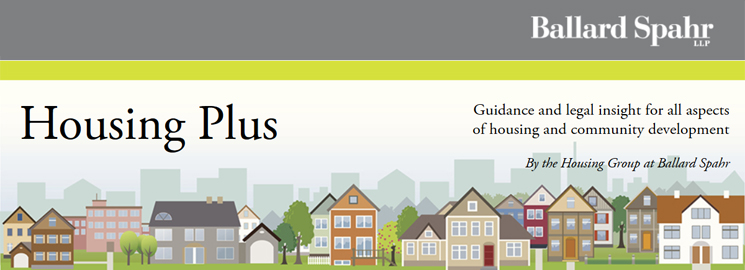
During one of the sessions at Ballard Spahr’s Ninth Annual National Housing Symposium, Mara Blitzer from the U.S. Department of Housing and Urban Development (HUD) discussed federal housing resources for aging Americans with a focus on HUD’s Section 202 Supportive Housing for the Elderly Program. Ms. Blitzer explained that Section 202 is the federal government’s only rental housing program targeted to low-income seniors. Even then, Section 202 is only a small fraction of HUD’s overall rental assistance programs. Unfortunately, the funding levels for Section 202 approved by Congress since 2011 remain approximately half of the pre-2011 funding levels.
She explained that older adults of today are more likely than their predecessors to have limited financial resources to put toward housing costs. Ms. Blitzer pointed out important aspects of Section 202 and how it can be used to help the aging population:
-
One of the main goals of Section 202 is to enable the elderly population to “age in place” to improve the quality of life and provide cost saving by not relocating to a more expensive care facility like a nursing home, for instance.
-
Section 202 has helped fund over 390,000 units of affordable supportive housing over 50 years allowing elderly adults to age in place.
-
HUD and the United States Department of Health and Human Services (HHS) have collaborated to research useful practices and analyze how services can be incorporated into existing affordable housing systems. Some of the goals of this research are to increase the residents’ quality of life and realize cost savings to the public sector by reducing the need for more expensive services and care facilities.
-
HUD and HHS research uncovered a correlation between HUD-assisted households and Medicare and Medicaid use by elderly adults as well as more chronic conditions and higher Medicare spending than unassisted households.
-
Some research organizations came together to analyze effective models of affordable housing linked with supportive services with the goal of aging in place. Congress approved $20 million for FY2014 for the Section 202 demonstration. HUD’s request for additional, unused funds in order to generate enough projects for a helpful evaluation was not approved for FY2014; it may still be reconsidered for FY2015.
Ultimately, the elderly population is on the rise without a corresponding increase in investments in affordable housing and services for them. This could lead to greater risk of homelessness and higher cost to tax payers. Through Section 202, there is hope for a sustainable long term solution. Ms. Blitzer’s presentation is available here.